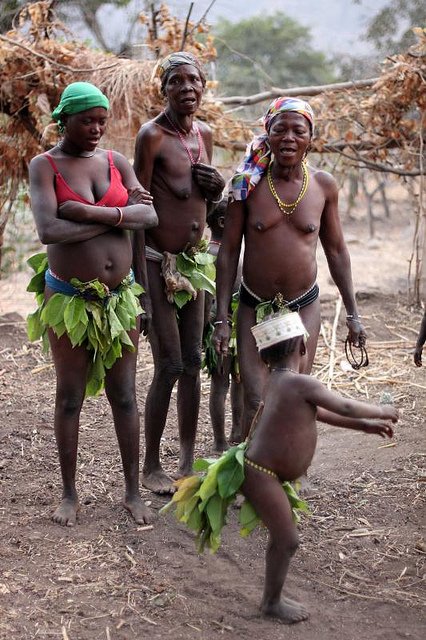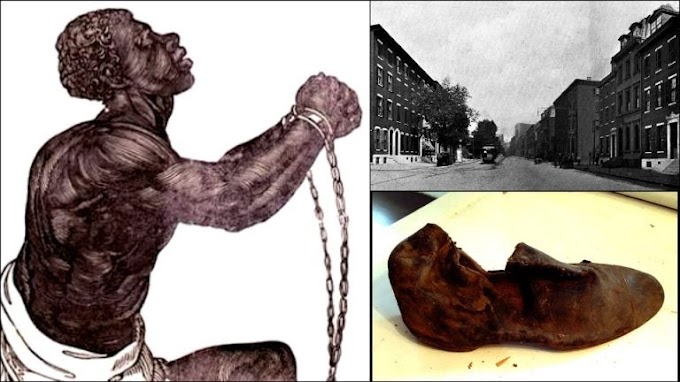How the Church of England Made £10.1 Billion From the Transatlantic Slave Trade
In 1704, the Church of England established a scheme called Queen Anne’s Bounty to support poor clergymen. It was from donations made to this fund that the clergymen who managed it started investing in transatlantic slavery, a booming trade at the time.
The murder of George Floyd in May 2020, and the #BlackLivesMatter protest it revived, questioned the value placed on the lives of people of color and other minority groups. Like the Coronavirus, these events created ripples felt not only in the US but across the globe. It brought racism, discrimination, and other practices that promote inequality under intense scrutiny like never before. And events like the #MeToo Movement surfaced with renewed force to demand not only responsibility but justice. 2020 was chaotic and soothing at the same time because we saw wronged groups cry, and for once, our priority wasn’t to debate if an overworked engine had the right to let out steam.
However, the absence of debate created the room to probe everything, and probing was bound to unearth corpses of unfortunate truths. One of such truths was the Church of England’s involvement in the transatlantic slave trade. The analysis of data held by the University College London exposed 96 clergymen who profited from the business. Surprisingly, in the early 1800s, while the Church campaigned vigorously for the abolition of slavery with an upraised arm, it reaped the benefits of the horrific trade with the other.
The charity managing the Church’s investment portfolio, known as the Church Commissioners, instituted an investigation to trace the history of their £10.1 billion endowment fund. They found that their predecessors who handled the Church’s investments in the 18th century invested £204,000 (estimated to be worth £443m today) in the South Sea Company, which held the proprietary contract to transport enslaved Africans to Spanish colonies in South America for over 30 years.
In 1704, the Church of England established a scheme called Queen Anne’s Bounty to support poor clergymen. It was from donations made to this fund that the clergymen who managed it started investing in transatlantic slavery, a booming trade at the time. The Church Commissioners also found that people who profited from this trade made numerous contributions to the fund.
This discovery that while the Church preached to Africans about a God in whose image they were made, it funded a company that carted them away in ten of thousands moved the Archbishop of Canterbury, Most Rev. Justin Welby, to render a public apology. The Archbishop, who chairs the Church Commissioners that exhumed this ugly truth, described the Church’s source of income as a “source of shame.”
The Church continued its investments in the slave trade well into the 19th century, making it possible to accumulate the hefty amount the fund now has. The Archbishop acknowledged that his predecessors played dirty, and like a mad person dancing naked on the square, the burden of embarrassment has fallen on the relatives.
In his words, Welby remarked, “this abominable trade took men, women, and children created in God’s image and stripped them of their dignity and freedom. The fact that some within the Church actively supported and profited from it is a source of shame. It is only by facing this painful reality that we can take steps towards genuine healing and reconciliation – the path that Jesus Christ calls us to walk.”
However, it remains to be answered how the Church intends to begin taking steps towards this healing and reconciliation. In recent years, the Church had apologized after it was revealed that dozens of its clergymen owned slaves. This apology came after it came out that the Church’s missionary organization, The Society for the Propagation of the Gospel, branded the word SOCIETY across the chests of its slaves on its plantation in Barbados.
It may strike a chord of honesty that the Church Commissioners conducted this investigation themselves and made the findings known. However, in this age of fragile faith, it has to do more than render public apologies for its sins.
In an interview, Prof. Sir Hilary Beckles noted that the British and European firms, organizations, and institutions that drew from the lucrative well of slavery have to do more than apologies. Commenting on the mess of Caribbean slavery, the professor said that while no one can change history’s timestamps, the institutions that created it can at least atone for bad behavior.
“It is not enough to make your apology as a public spectacle; it is not enough to present it as public relations exercise,” the Prof. said.
It’s commendable that some banks and organizations that admitted their participation in the slave trade are taking steps to atone for the atrocities they helped wrought. However, the unasked question is, what is the Church of England going to do with the £10.1 billion it made from its investments in the slave trade?
Following the 1833 slavery abolishment, the UK government served a version of justice that compensated slave owners, rather than the enslaved, for their “loss of human property.” Considering the Church has planned to take steps towards “healing and reconciliation,” one wonders it intends keep the £10.1 billion, or toe the path of compensation too? And who will it compensate should it choose to do so?
So far, the Archbishop said he would “pray for those affected by the news and hope that we may work together to discern a new way forward.” The Bishop of Birmingham, Right Rev. David Urquhart, who chaired the group of the Church Commissioners that oversaw the investigation, said the Church will use what it has learned to champion the “forefront of responsible investment globally.” Aside from apologies and promises of prayers and good behavior, no spokesperson has said precisely how the Church intends to make reparations.
The South Sea Company, through which the Church reaped its ROI in slavery, recorded an alarming 15% death of the tens of thousands of enslaved Africans it transported over the years. Many more died while irrigating plantations with their sweat. One can argue that in addition to Christ, the blood of Africans also flowed for the Church of England.
Source: Chiedozie Omeje,
Credit:









0 Comments